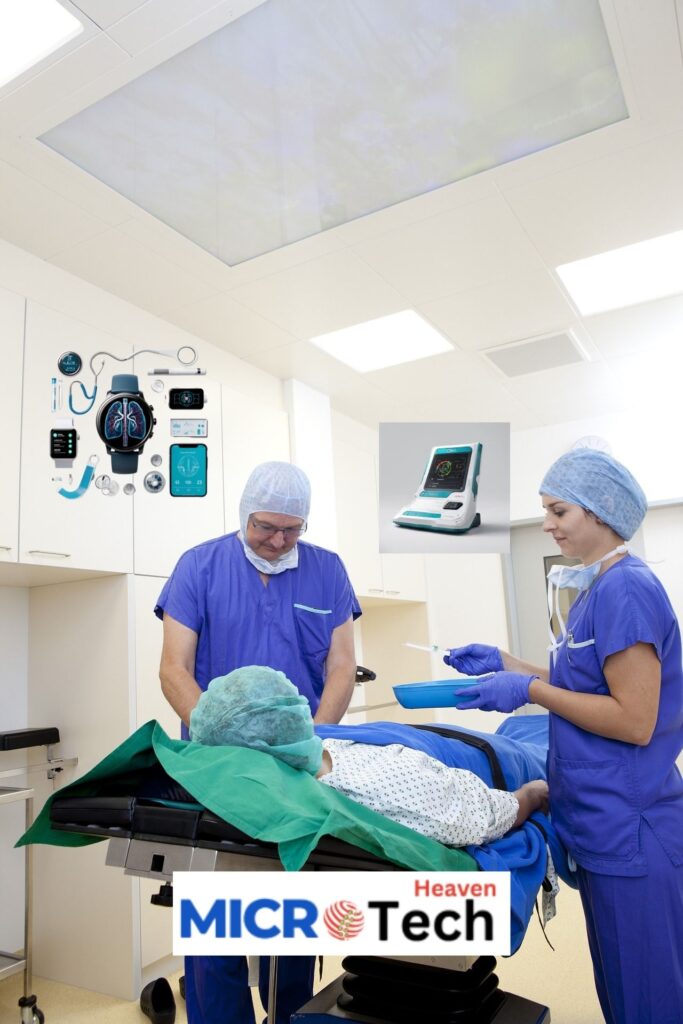Index
- Introduction
- What Are AI-Driven Diagnostics Tools?
- Importance of AI in Healthcare Diagnostics
- How AI-Driven Diagnostics Work
- Types of AI-Driven Diagnostics Tools
- 5.1 Image Recognition Tools
- 5.2 Predictive Analytics Tools
- 5.3 Natural Language Processing Tools
- 5.4 Wearable Health Monitors
- Benefits of AI-Driven Diagnostics Tools
- Challenges and Concerns in AI-Driven Diagnostics
- Future of AI in Healthcare Diagnostics
- Conclusion
- FAQs
Introduction
In recent years, AI-driven diagnostics tools have emerged as a game-changer in the healthcare industry. These innovative technologies are helping doctors make faster and more accurate diagnoses, ultimately improving patient outcomes. In this article, we will explore what AI-driven diagnostics tools are, how they work, and why they are becoming increasingly important in healthcare.
What Are AI-Driven Diagnostics Tools?
AI-driven diagnostics tools are software applications that use artificial intelligence (AI) to analyze medical data and assist healthcare professionals in diagnosing diseases and conditions. These tools can process vast amounts of information quickly and accurately, making them invaluable in clinical settings. Imagine a doctor trying to diagnose a complex condition based on a patient’s symptoms and test results. With the help of AI-driven diagnostics tools, the doctor can receive insights and recommendations that enhance their decision-making process.
Importance of AI in Healthcare Diagnostics
The integration of AI in healthcare is transforming how medical professionals approach diagnosis and treatment. Here are some key reasons why AI is essential in this field:
- Speed: AI can analyze data much faster than humans, allowing for quicker diagnoses.
- Accuracy: Machine learning algorithms can identify patterns that may be missed by human eyes, leading to more precise diagnoses.
- Efficiency: By automating routine tasks, healthcare providers can focus on more critical aspects of patient care.
- Cost-Effectiveness: Reducing diagnostic errors can lead to significant cost savings for healthcare systems.
How AI-Driven Diagnostics Work
AI-driven diagnostics tools operate through a series of steps:
- Data Collection: The first step involves gathering data from various sources, such as medical records, lab results, and imaging studies.
- Data Processing: The collected data is then processed using machine learning algorithms that analyze patterns and correlations within the information.
- Diagnosis Generation: Based on the analysis, the tool generates potential diagnoses or recommendations for further testing.
- Clinical Decision Support: Healthcare professionals receive these insights to aid their decision-making process.
This systematic approach allows for a more comprehensive understanding of a patient’s condition.

Types of AI-Driven Diagnostics Tools
There are several types of AI-driven diagnostics tools currently being used in healthcare
5.1 Image Recognition Tools
Image recognition tools utilize deep learning algorithms to analyze medical images such as X-rays, MRIs, and CT scans.
- Example: Companies like Aidoc use AI to detect abnormalities in radiology images, helping radiologists prioritize urgent cases.
5.2 Predictive Analytics Tools
Predictive analytics tools analyze historical data to forecast future health outcomes.
- Example: IBM Watson Health employs predictive analytics to identify patients at risk for certain conditions based on their health records.
5.3 Natural Language Processing Tools
Natural language processing (NLP) tools help extract valuable information from unstructured data such as clinical notes and patient records.
- Example: Google Health has developed NLP algorithms that can read and interpret clinical notes to assist with diagnosis.
5.4 Wearable Health Monitors
Wearable health monitors track real-time health metrics like heart rate, blood pressure, and activity levels using AI algorithms.
- Example: Devices like the Apple Watch utilize AI to monitor users’ health data and alert them to potential issues.
Benefits of AI-Driven Diagnostics Tools
The advantages of implementing AI-driven diagnostics tools in healthcare are numerous:
- Enhanced Diagnostic Accuracy: By analyzing large datasets, these tools can reduce misdiagnoses significantly.
- Personalized Medicine: AI can tailor treatment plans based on individual patient data.
- Improved Patient Outcomes: Faster and more accurate diagnoses lead to better treatment results.
- Increased Accessibility: Remote diagnostic capabilities can reach underserved populations.
Challenges and Concerns in AI-Driven Diagnostics
Despite their benefits, there are challenges associated with AI-driven diagnostics tools:
- Data Privacy: Protecting patient information is crucial; breaches could lead to significant consequences.
- Integration Issues: Many healthcare systems struggle to integrate new technologies into existing workflows.
- Regulatory Hurdles: Navigating regulatory approvals for new diagnostic tools can be complex and time-consuming.
- Trust Issues: Some healthcare professionals may be hesitant to rely on technology over their expertise.
Future of AI in Healthcare Diagnostics
The future of AI-driven diagnostics looks promising as technology continues to advance. We can expect:
- Greater Integration: As systems become more interconnected, the efficiency of diagnostics will improve.
- Enhanced Algorithms: Continuous improvements in machine learning will lead to even more accurate predictions and diagnoses.
- Broader Applications: New areas of medicine will benefit from AI-driven diagnostics as research expands.
Conclusion
In conclusion, AI-driven diagnostics tools represent a significant leap forward in the field of healthcare. By harnessing the power of artificial intelligence, these tools enhance diagnostic accuracy, improve patient outcomes, and streamline processes within healthcare systems. As technology continues to evolve, embracing these innovations will be crucial for providing high-quality care and ensuring better health for all patients.
FAQs
- What are AI-driven diagnostics tools?
AI-driven diagnostics tools are software applications that use artificial intelligence to assist healthcare professionals in diagnosing diseases by analyzing medical data. - How do these tools improve patient care?
They enhance diagnostic accuracy and speed by analyzing large datasets quickly, leading to better treatment decisions. - What types of data do these tools analyze?
They analyze various types of data including medical images, lab results, clinical notes, and real-time health metrics from wearable devices. - What challenges do AI-driven diagnostics face?
Challenges include data privacy concerns, integration with existing systems, regulatory hurdles, and building trust among healthcare professionals regarding technology reliance.


